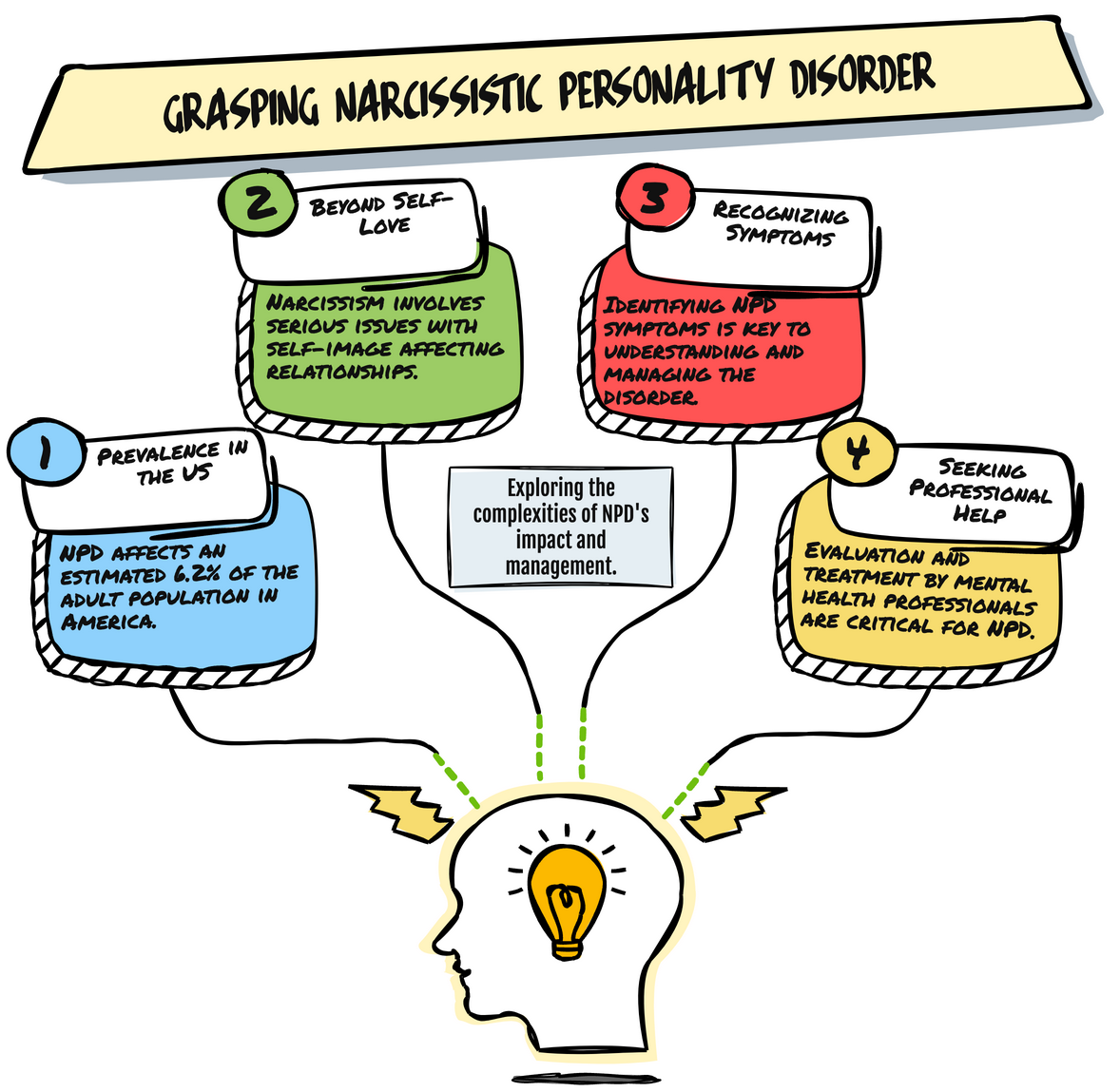Studying the intricate dynamics between a Narcissist and an individual with Borderline Personality Disorder in a romantic relationship reveals a complex interaction that goes beyond superficial appearances.
The dynamics between these two personality types can be both captivating and tumultuous, often leaving observers puzzled by the push and pull of emotions.
As we unravel the layers of this unique bond, we will shed light on the underlying motivations and challenges that drive this enigmatic relationship, offering insights that may surprise you and encourage a deeper understanding of these intricate dynamics.
Key Takeaways
- NPD and BPD affect relationship dynamics and require therapy for healthier functioning.
- Understanding object constancy and empathy is crucial in navigating NPD-BPD relationships.
- Triggers include criticism, fear of abandonment, power struggles, and conflicts over control.
- Treatment options include individual therapy, couples therapy, DBT, and CBT for NPD and BPD.
Understanding NPD and BPD Characteristics
Understanding the characteristics of Narcissistic Personality Disorder (NPD) and Borderline Personality Disorder (BPD) sheds light on the complexities that individuals with these conditions navigate in relationships.
Both disorders affect the individual’s ability to maintain healthy and stable relationships due to challenges with empathy for others, object relations, and fear of abandonment.
Individuals with NPD exhibit an exaggerated sense of self-importance, a lack of empathy, and a focus on self-enhancement, which can hinder their capacity to form meaningful connections.
On the other hand, those with BPD struggle with intense attachments, mood instability, and a deep-seated fear of abandonment, making it hard for them to trust and engage in healthy relationships.
Therapy for borderline personality focuses on improving relationship skills, managing emotions, and fostering a sense of self-worth.
Understanding the levels of object constancy and empathy in both disorders is crucial in navigating the complexities of relationships involving NPD and BPD.
Interplay Between NPD and BPD

In examining the interplay between Narcissistic Personality Disorder (NPD) and Borderline Personality Disorder (BPD), the complexities of their relationship dynamics become starkly evident.
- Both narcissists and individuals with BPD struggle with whole object relations and object constancy, impacting their ability to maintain stable intimate relationships.
- Narcissists and borderlines form intense romantic attachments rapidly but face challenges detaching, leading to volatility in the relationship.
- Narcissists seek partners who boost their self-esteem, while borderlines crave constant, unconditional love, creating conflicting expectations that destabilize the relationship.
- The interplay between NPD and BPD often results in a tumultuous dynamic, characterized by shared struggles with self-identity and unmet emotional needs, perpetuating a cycle of seeking validation and fulfillment from each other.
Understanding the interplay between these two personality disorders is crucial in guiding effective treatment strategies to address the underlying issues contributing to the instability and intensity of their relationships.
Triggers in NPD-BPD Relationships
Triggers in NPD-BPD relationships can ignite intense emotional responses and exacerbate the already complex dynamics between individuals with Narcissistic Personality Disorder (NPD) and Borderline Personality Disorder (BPD).
Criticism and rejection can evoke rage in narcissists and feelings of abandonment in borderlines.
The fear of abandonment in borderlines may lead to controlling behaviors in narcissists, while the narcissists’ constant need for admiration can trigger feelings of inadequacy in borderlines.
The unpredictable mood swings and intense emotional reactions of borderlines can provoke anger and withdrawal in narcissists.
Power struggles and conflicts over control often result in explosive reactions from both parties.
Both individuals struggle with a fractured sense of self, leading to unmet needs and triggers within the relationship.
Envy and developmental arrest also play significant roles in fueling these triggers.
It’s essential to acknowledge that early attachment wounds underlie the intricate dynamic between individuals with Borderline and Narcissistic traits, highlighting the necessity for specialized treatment approaches in intimate relationships plagued by NPD and BPD.
Treatment Options for NPD and BPD

What treatment options are available for individuals with Narcissistic Personality Disorder (NPD) and Borderline Personality Disorder (BPD)? When addressing these complex personality disorders, a range of therapeutic interventions can be instrumental in promoting healing and growth. Here are some essential treatment options:
- Individual Therapy: Seeking individual therapy is crucial for both partners to confront attachment trauma and cultivate healthier self-perceptions.
- Couples Therapy: Engaging in couples therapy aids in understanding patterns of idealization, devaluation, and manipulation, fostering healthier relationship dynamics.
- Dialectical Behavior Therapy (DBT): DBT equips individuals with BPD with emotional regulation skills, enhances interpersonal effectiveness, and mitigates self-destructive behaviors.
- Cognitive Behavioral Therapy (CBT): CBT assists individuals with NPD in challenging maladaptive thoughts, boosting self-esteem, and nurturing empathy towards others.
Possibility of NPD-BPD Relationship Success
The potential for successful navigation of a relationship between individuals with Narcissistic Personality Disorder (NPD) and Borderline Personality Disorder (BPD) hinges on understanding and addressing the intricate interplay of their emotional vulnerabilities and relational patterns. Building a successful relationship between individuals with NPD and BPD requires a deep commitment to therapy, self-awareness, and personal growth. Here is a table outlining key factors influencing the success of a relationship between individuals with NPD and BPD:
| Factors | Description |
|---|---|
| Therapy | Both individuals should engage in individual and couples therapy to address their personality disorders. |
| Boundaries | Establishing and respecting boundaries is crucial to prevent emotional manipulation and conflict. |
| Communication | Open and honest communication is essential for fostering understanding and resolving conflicts. |
| Self-awareness | Increasing self-awareness can help individuals recognize and manage their emotional triggers and reactions. |
| Empathy | Developing empathy towards each other’s struggles can create a more compassionate and supportive relationship. |
Frequently Asked Questions
Do Narcissists Love Borderlines?
We believe that the intricate dynamics between individuals labeled as narcissists and borderlines can be complex and multifaceted.
When exploring the question of whether narcissists love borderlines, it’s essential to consider the various factors that may influence their feelings and behaviors.
Understanding the nuances of these personalities and their interactions can shed light on the complexities inherent in such relationships.
Can a Narcissist Be Hurt by a Person With Borderline?
Yes, a narcissist can be deeply hurt by a person with borderline personality disorder. The intense emotional reactions and fear of abandonment exhibited by a person with borderline traits can trigger vulnerabilities in the narcissist, leading to feelings of inadequacy and wounds to their fragile ego.
This dynamic can result in a tumultuous relationship where both parties experience significant emotional pain and distress.
Can Narcissism and Borderline Coexist?
Yes, narcissism and borderline traits can coexist in individuals, leading to complex interpersonal dynamics. Understanding the nuances of each personality disorder is crucial in navigating these relationships.
Combining self-reflection and professional guidance can help manage challenges that arise. Awareness of one’s behavior and its impact on others is key to fostering healthier connections.
Building empathy and communication skills can facilitate growth and improve overall relationship satisfaction.
What Is the One Question to Identify a Narcissist?
When identifying a narcissist, one key question to ask is whether they lack empathy and constantly seek admiration.
Their ability to take responsibility in past relationships, efforts to improve, express gratitude, and manage disagreements can also provide valuable insights.
Observing how they interact with their parents of the opposite sex can offer further clues.
Understanding these traits helps in recognizing narcissistic tendencies and potential challenges in relationships.
Can a Covert Narcissist and someone with Borderline Personality Disorder have a successful relationship?
It is highly challenging for a covert narcissist and BPD individual to maintain a successful relationship. The covert narcissist may struggle with empathy and validation, while the BPD individual may experience intense mood swings and fear of abandonment. These contrasting traits often lead to conflicts and struggles within the relationship.
Conclusion
In conclusion, navigating a relationship between a Narcissist and Borderline individual can feel like walking on eggshells. The interplay of their characteristics and triggers can lead to intense dynamics.
However, with proper treatment and dedication, there's a glimmer of hope for success. Remember, every cloud has a silver lining, and with the right support, these individuals can learn to develop healthier coping mechanisms and build stronger, more stable relationships.










